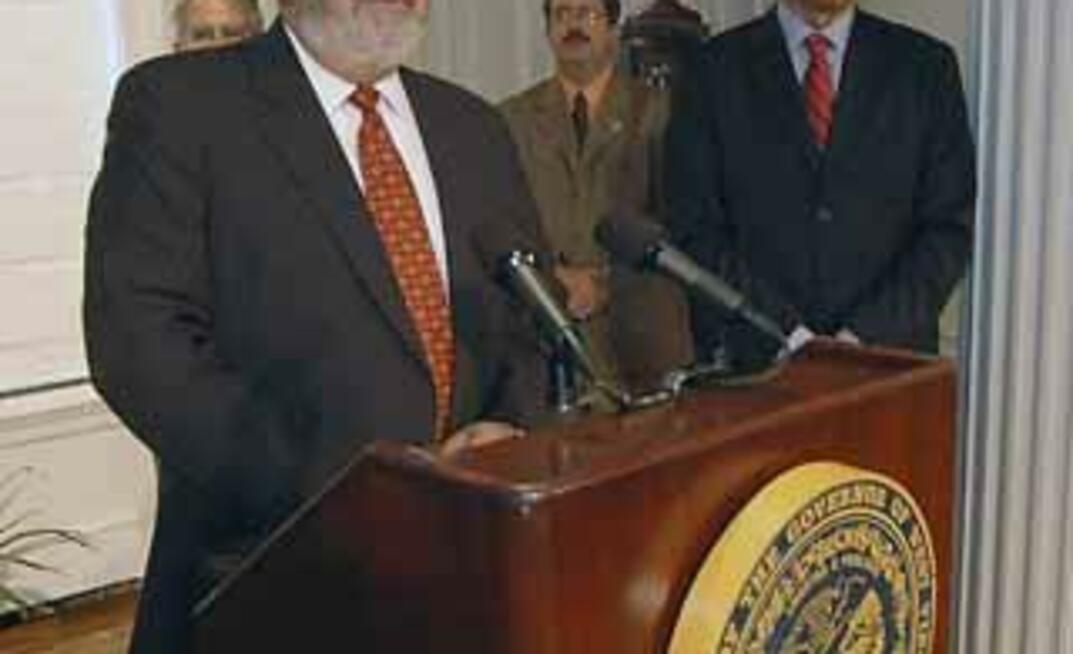Wooten, a 30-year industry veteran, took over the seat on a permanent basis last October after interim director James Dean exited to return to his duties at West Virginia University. He is a graduate of Emory and Henry College as well as Memphis State University School of Law (now the University of Memphis), and has been involved with many mining groups including the Bituminous Coal Operators’ Association Safety Committee, American Mining Congress, National Mining Association and the West Virginia Coal Association.
While absent from the industry for a period of time, a love for the mining community brought him back.
“I returned to the industry – and specifically to this position – because I believe I can make a contribution to the state’s mining industry where it concerns safety,” Wooten said.
“I have a strong interest in helping to find good, workable solutions to the state’s mine industry so that the men and women who enter the mines every day understand what they need to do to have safe working conditions and that the mine operators are responsible for ensuring safe working conditions, providing safety programs that support the industry.”
Wooten noted that the entire agency has worked hard to foster a good working relationship between it and the offices of the Mine Safety and Health Administration.
“This has been especially important in the past year with all of the inspections and investigations and new regulations that have been issued on state and federal levels,” he said.
“Certainly we have not always agreed on every issue, but we have communicated with each other and kept the lines of communications open because we all have, as our number one priority, mine safety.
“Both of our agencies are regulated and by two very different governing bodies. That in itself is a challenge as MSHA struggles to respond to and carry out the directives of Congress and we do the same with our state Legislature.
“We need, I think, to acknowledge that we’ve got to share the information we have, respect the regulatory requirements of each other and talk to each other to overcome issues of timing, funding, testing and safety.”
The work that the WVOMHST has done to improve the safety levels of the state’s mining operations, Wooten said, is setting a positive example for other coal-rich states in the nation – even if it took a series of unfortunate events in 2006 to magnify the unquestionable effect the agency has.
“West Virginia has been so much in the headlines for the past 18 months that we are being watched every time we make a move, especially as those moves relate to safety and technology and the way we are handling the accident investigations of last year,” Wooten said.
“By taking responsibility for looking at safety under the auspices of our safety technology task force, improving our mine rescue teams and their equipment, incorporating reporting programs for [self-contained self-rescuer] inventories and being diligent in our investigations, we have moved forward into some uncharted territory.
“I think, also, that we are setting a good example by working with mine operators and labour on all of our research and safety technology activities. We are showing other states that, when it comes to mine safety, working together gets results that everyone – management, labour and government – can understand and commit to.”
As a result, other states have approached the agency for assistance in strengthening their own mining programs, especially regarding legislation and safety/training.
“It is rewarding to know that the work we have done here can be helpful to other states as well,” Wooten said.
Safety technology, equipment, training and inventories are the most pressing issues concerning the industry and, in the state itself, finding talented and experienced new members for its office in the roles of both inspector and safety instructor. The office, though, is working towards expanding upon those issues.
“With regard to safety, we’re helping by continuing our research, setting and maintaining deadlines for compliance with regard to safety equipment and sharing our information with our own industry and other states and federal agencies that have asked for it,” Wooten said.
“We continue to push for national testing where it is needed and we are responding to MSHA with regard to testing, new regulations and standards – again, by sharing what we have learned and asking the tough questions that we all need answers to.”
It may be another year or two, he added, before the WVOMHST can complete much of its ongoing work on safety equipment and training, and that is one of its biggest challenges.
“To some people, that might seem like a very long time,” Wooten said.
“But if you consider what has been done in the past 15 months with regard to studies, tests, regulations and mine improvements, you will see that we’ve taken some very big, even giant steps. But we have more to take and we must press on.”
Wooten looks to a five-pronged approach – communications, teamwork, vigilance, technological advances and a stronger agency team – for making the state office more comprehensive. These factors, he said, mirror exactly what the industry as a whole requires to improve and become the most efficient, and the safest, it can be.
“We have to communicate – with each other in the agency, with MSHA, with state and federal government, with mine operators, manufacturers and miners – to make sure that everyone is on the same page when it comes to safety first,” Wooten said.
“We have to work as a team, recognising that everyone can contribute because we all see the same challenge in different ways.
“We have to take advantage of computerisation, programs and technology to track equipment, benchmark safety standards and learn more about what we can do to tweak our programs and equipment so that it is more responsive and helpful,” he said.
“We need to be vigilant about developing and following safety standards, being personally and collectively responsible for doing jobs the right way, not the fast way, and for taking time to train and teach a new generation so that they are safer than we are and believe that taking time for safety is a number one priority every day – not just to avoid citations and fines, but because it’s the way we ensure that our miners leave safely from their jobs every day.”
For more on Wooten and West Virginia’s state mining office, check out the remainder of this interview in the August/September issue of American Longwall Magazine.
























